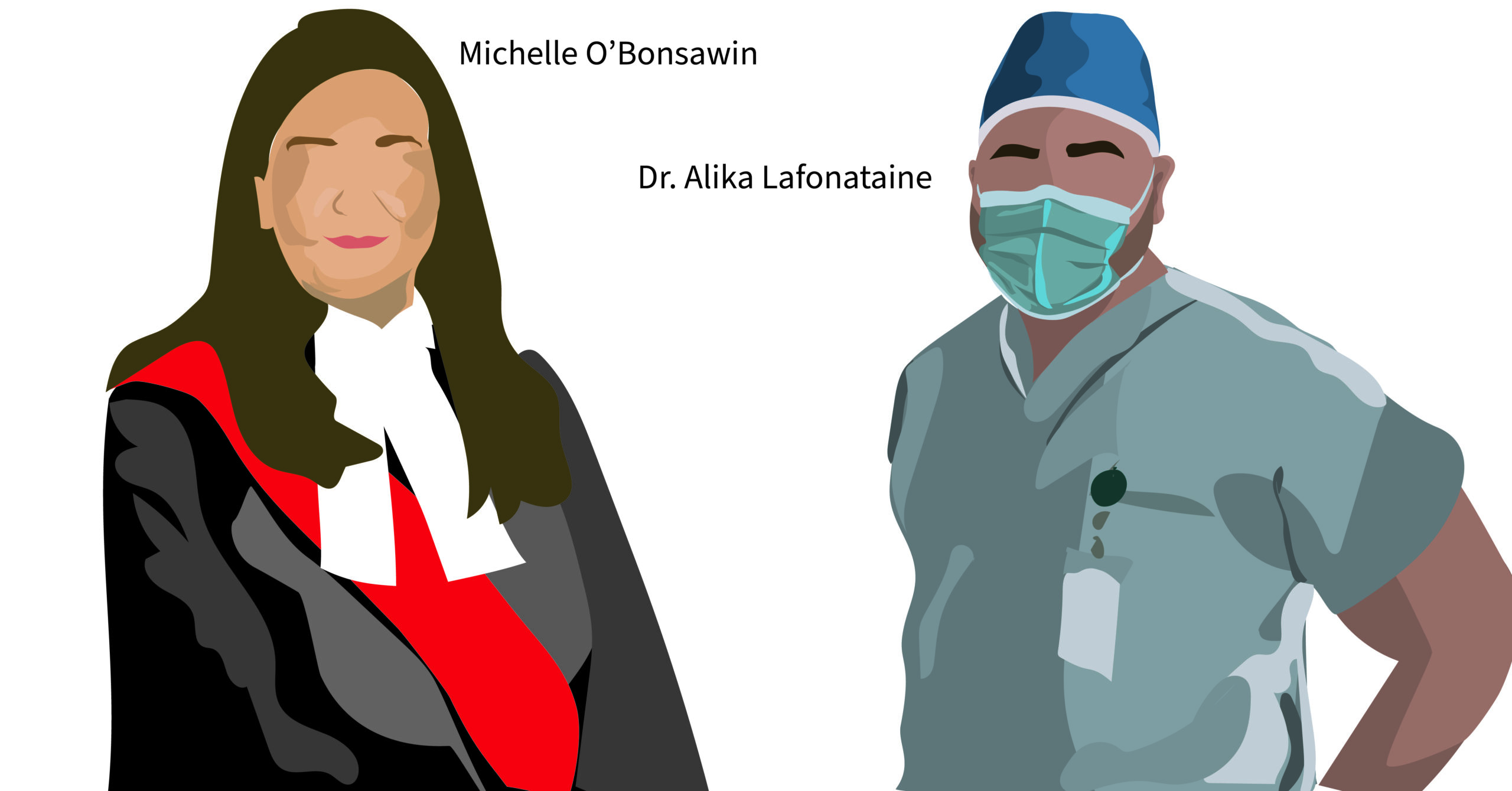Colonial resistance and celebrating Indigenous achievements
Indigenous Peoples take control of their narrative by acquiring leadership roles.
First Nations (status/non-status), Métis, and Inuit communities, living both on- and off- reserve, in urban, rural, and remote areas are victims of colonization. This includes attempts made on behalf of the Government of Canada to culturally assimilate, systemically discriminate, and violently exclude Indigenous populations from governance and decision-making. However, despite these attempts, Indigenous resistance and empowerment have continued to be at the forefront of defying the heteronormative, patriarchal, and colonial agendas that continue to be perpetuated.
Most recently, Michelle O’Bonsawin, an Abenaki woman of the Odanak First Nations Community in Québec, has become the first Indigenous judge to be appointed to the Ontario Superior Court of Justice. Dr. Alika Lafontaine of Treaty 4 territory, hails from Métis, Ojibwe, Cree, and Pacific Islander ancestry, and has become the first Indigenous president of the Canadian Medical Association.
These are major achievements for members of Indigenous communities, who are consistently impacted by systemic racism. Policies, laws, and programs designed at the height of settler colonialism were intended to benefit settler communities at the expense of the health and well-being of Indigenous populations.
In a 2020 research report conducted by The Congress of Aboriginal Peoples—one of the five National Indigenous Representative Organizations—the over-representation of Indigenous peoples within the Canadian justice system was explored. Reports found that the colonial justice system itself has been an active member in advancing violence against Indigenous Peoples through criminalization and institutionalization solely based on Indigenous identity. In order to meet the needs of Indigenous Peoples and communities, we need more Indigenous representation within the leadership of these systems, along with allied professionals. These workers must be qualified and well-versed in understanding cultural safety, competency, and working meaningfully with Indigenous populations to advance well-being and safety.
The inclusion of professionals like Justice O’Bonsawin and Dr. Lafontaine are critical to advancing the ways Indigenous empowerment is embedded within healthcare and legal systems. There must be necessary transformations in the way Indigenous Peoples are portrayed within media and workplaces.
As outlined in the Section 35 (1) of the Constitution Act: “The existing aboriginal and treaty rights of the aboriginal peoples of Canada are hereby recognized and affirmed.” It is unfair that Indigenous Peoples have been continually disadvantaged. However, with the efforts made by Indigenous leaders, scholars, and activists, Indigenous self-governance continues to be critical in transforming a system that is systematically rooted in colonial practices. The outcome of this will result in promoting community development and empowerment for the well-being of Indigenous populations.
There are still many systemic barriers that currently exist for Indigenous Peoples and members of other equity-seeking populations. Policies are still inherently racist, patriarchal, and carry major colonial impacts that affect the well-being of Indigenous populations. The forefront of all discussions should be situated on celebrating Indigenous sovereignty, resilience and the major efforts made by Indigenous Peoples, communities, organizations, and allied individuals that have mobilized collectively to resist the colonial agenda.

